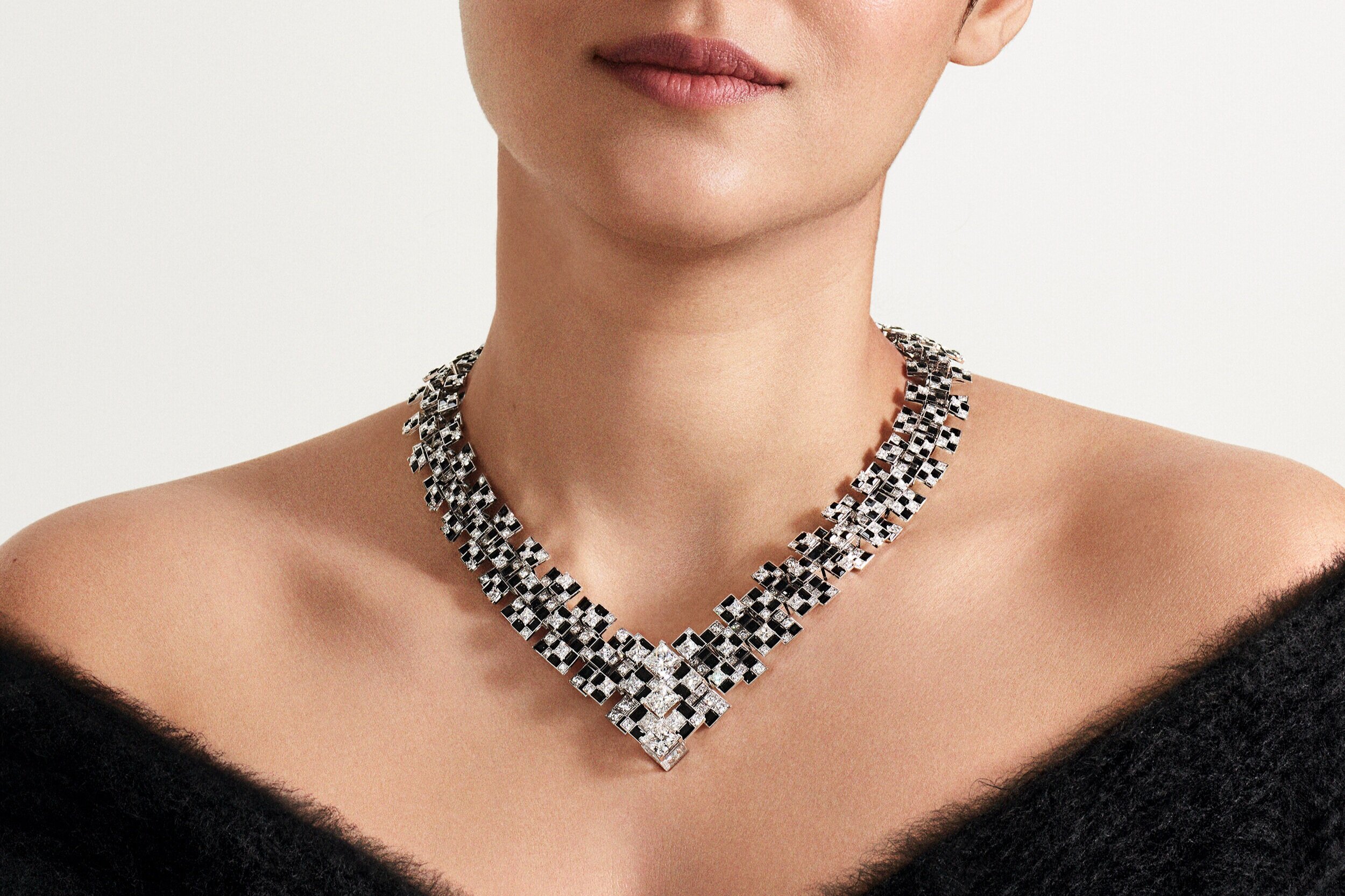The Exquisite Craftsmanship of 1920s' Vanity Cases
The vanity case showed off a dark blue enamelled panther atop a row of buff-top calibre-cut rubies, gently brushes against a tree full of cabochon turquoise blossom. The colourful and exotic scene is set against a mother-of-pearl garden landscape with a cabochon ruby sun, and is framed by raised onyx bars alternating with mother-of-pearl inlay and accented with diamonds.
The miniature work of art, 10.2 cm by 4.4 cm, is signed by Cartier, circa 1925, and opens to reveal a mirror, lipstick case, perfume vial, and covered compartment for powder.
This vanity is a beautiful example of the elaborate craftsmanship exhibited by jewellers throughout the 1920s and 1930s to create miniature objects d’art that could be proudly displayed and used by a lady in public.
Status symbols and perfect examples of the Art Deco period’s artistic creativity, these precious boxes, known as nécessaires, offer nostalgic peeks into the elegant lifestyle of a bygone era while also bearing witness to pivotal societal changes and the onset of women’s liberation.
As active members of the workforce during the First World War, women had achieved a level of emancipation that would not be surrendered; ladies would now smoke in public, previously the preserve of men, and proudly wore and even applied makeup in public, no longer the sign of loose morals. And after years of deprivation, the post-war era reignited a taste for the glamorous lifestyle.
To match these lifestyle developments, ladies needed sophisticated accessories and the finest jewellery houses such as Cartier, Boucheron, Lacloche Frères and Van Cleef & Arpels started to produce nécessaires, marrying the technical ingenuity required to create useful custom-made accessories with exquisite craftsmanship in miniature.
“From simple boxes, the cases became compartmented with a special function for each: Retractable comb, lighter, eye-shadows and lipstick,” explains Catherine Cariou, heritage director of Van Cleef & Arpels, pointing out, “These pieces were really the quintessence of chic and refinement.”
Justin Roberts, Sotheby’s Jewellery Specialist in London, adds, “With concealed clasps, openings, and sliding openings, the ingenious ones can resemble Chinese puzzle boxes and can appear as if they do not open.”
The surfaces were the perfect backdrop for refined decorative effects, often inspired by the East, with bejewelled scenes of Chinese dragons, Japanese plum blossoms, or mountain landscapes, though Roberts notes the designs ran the whole gamut of the Deco movement with inspiration also taken from Egypt, South America, Cubism, as well as ancient Rome and Greece.
Some of the finest examples of nécessaires can be found in the collection of Prince and Princess Sadruddin Aga Khan — on view at Pforzheim’s Jewellery Museum until January 6, 2019 – as well as the permanent collection of the Liang Yi Museum in Hong Kong. And examples of these marvellous miniatures can also be found at auction.
Roberts says typical vanity cases that come up for auction on a fairly regular basis can fetch a price range of anything from £3,000 to £15,000. However, the rarer and more elaborate examples command high prices. These can fetch between £20,000 to £80,000.
In 2015, Sotheby’s sold an unusual gem-set octagonal gold box by Cartier, circa 1925, for US$296,002 (estimated fork: USD$118,800 to USD$172,850). The vanity case was decorated with white enamel wave motifs, mother-of-pearl inlay, and black enamel with its terminals covered in carved coral flowers, seed pearls, cabochon emeralds, and diamonds.
In May, the British auction house sold cylindrical enamel vanity case in gold and black enamel, created by Henri Lavabre for Cartier and inspired by Japanese inrō, for USD$17,185 (estimate fork: USD$13,740 to USD$20,620).
“Today these are collected as objects and not used. In the same way that collectors may collect 18th-century snuff boxes, certain collectors will also focus and collect Art Deco vanity cases. It was the last great flourish of the goldsmiths' art in creating jewelled boxes,” Roberts notes.
Cairou points out the production of nécessaires would eventually give way, in the 1930s, to the larger minaudieres, elegant and streamlined clutches.
This Story was first written for Keyyes.com (June 2018)









